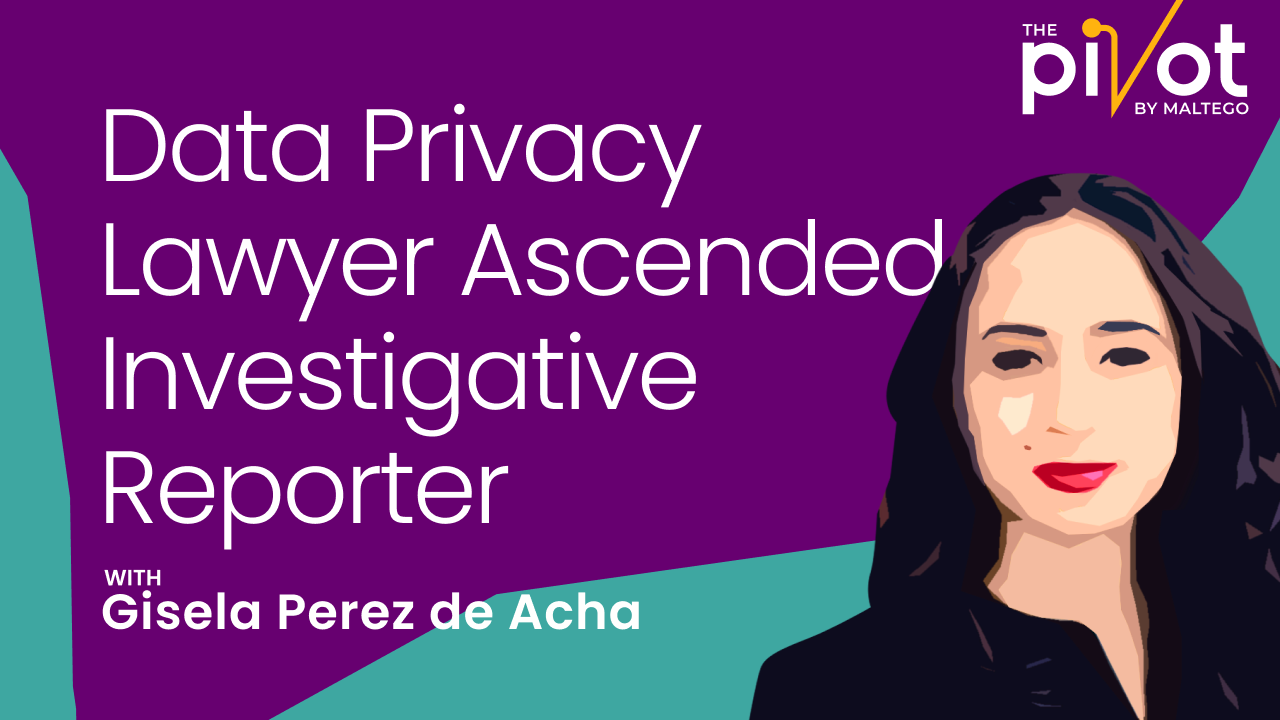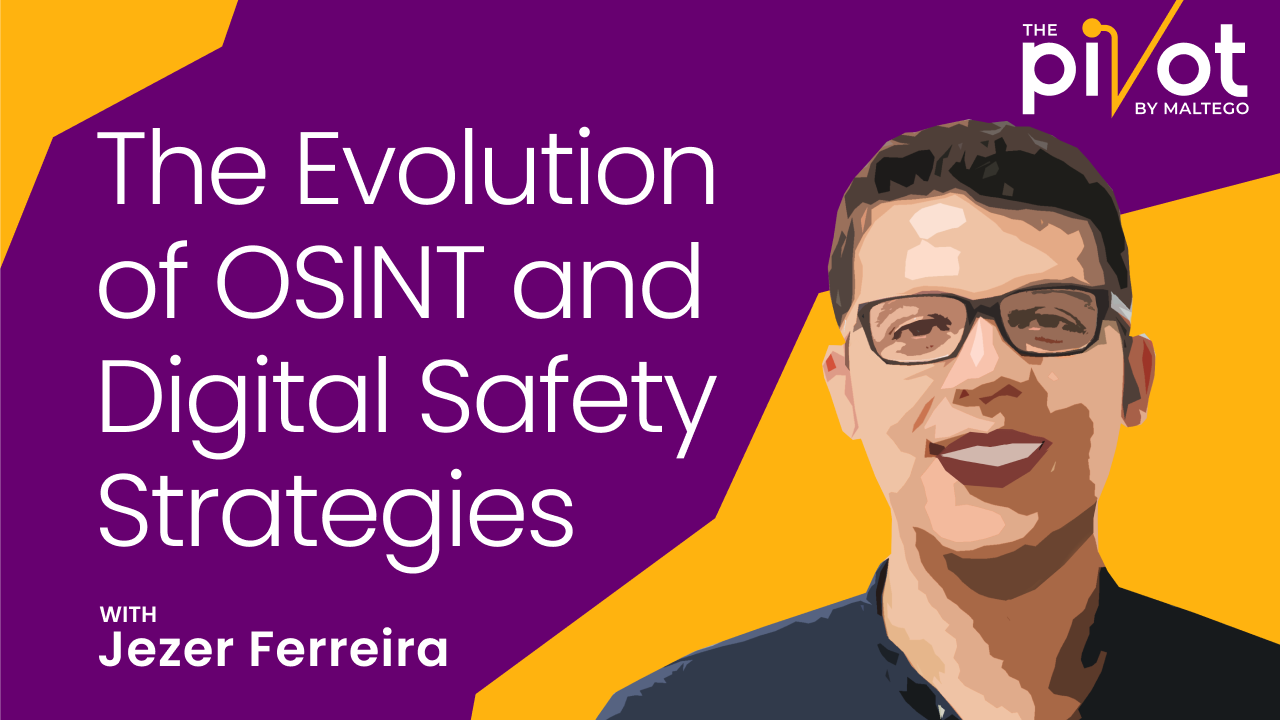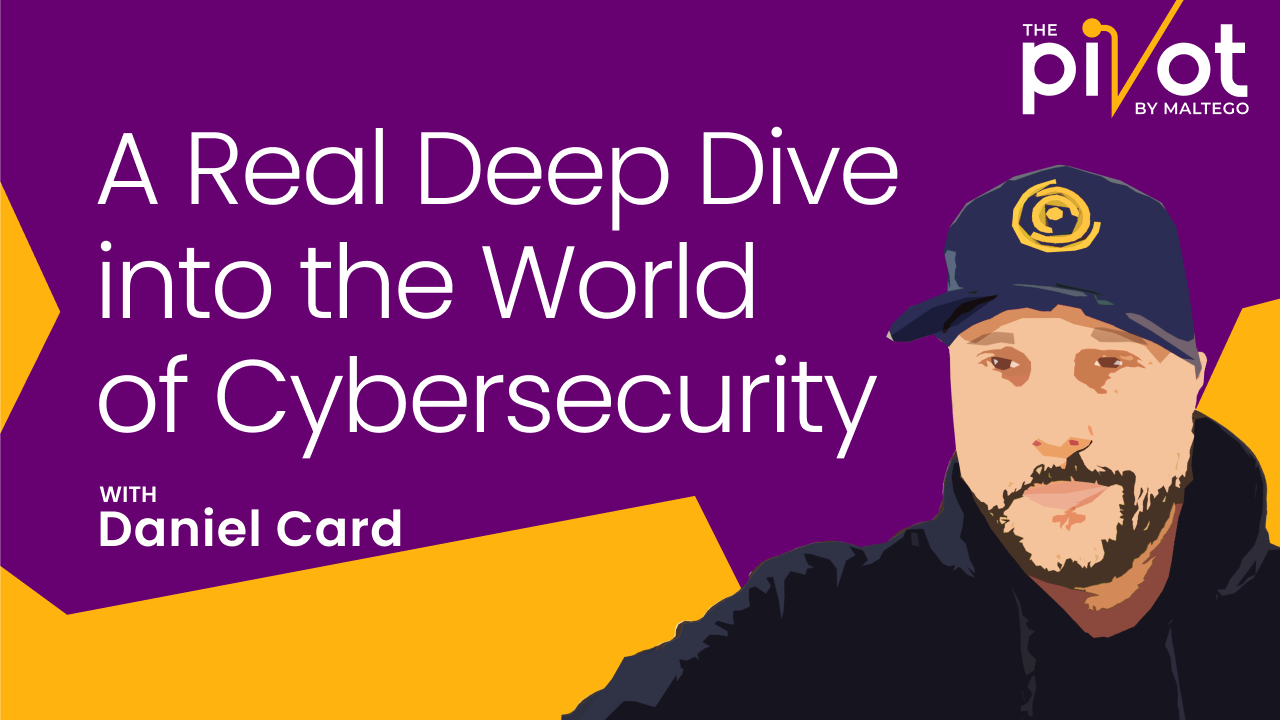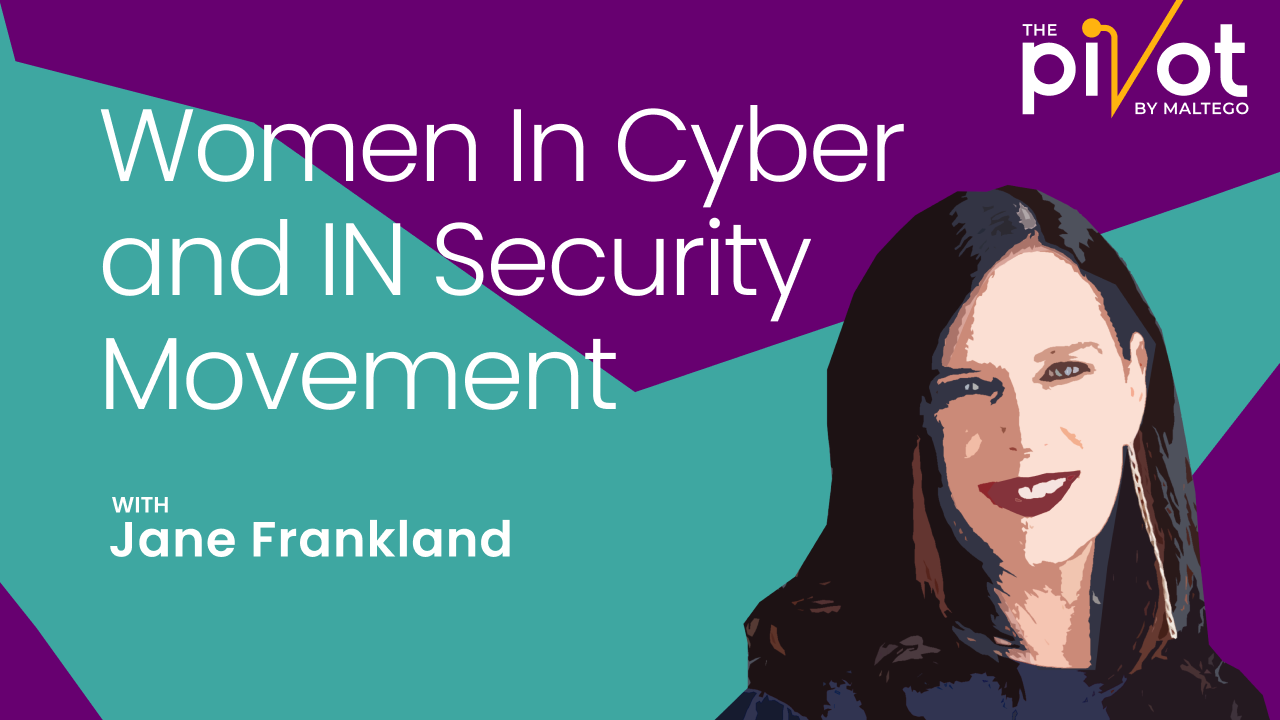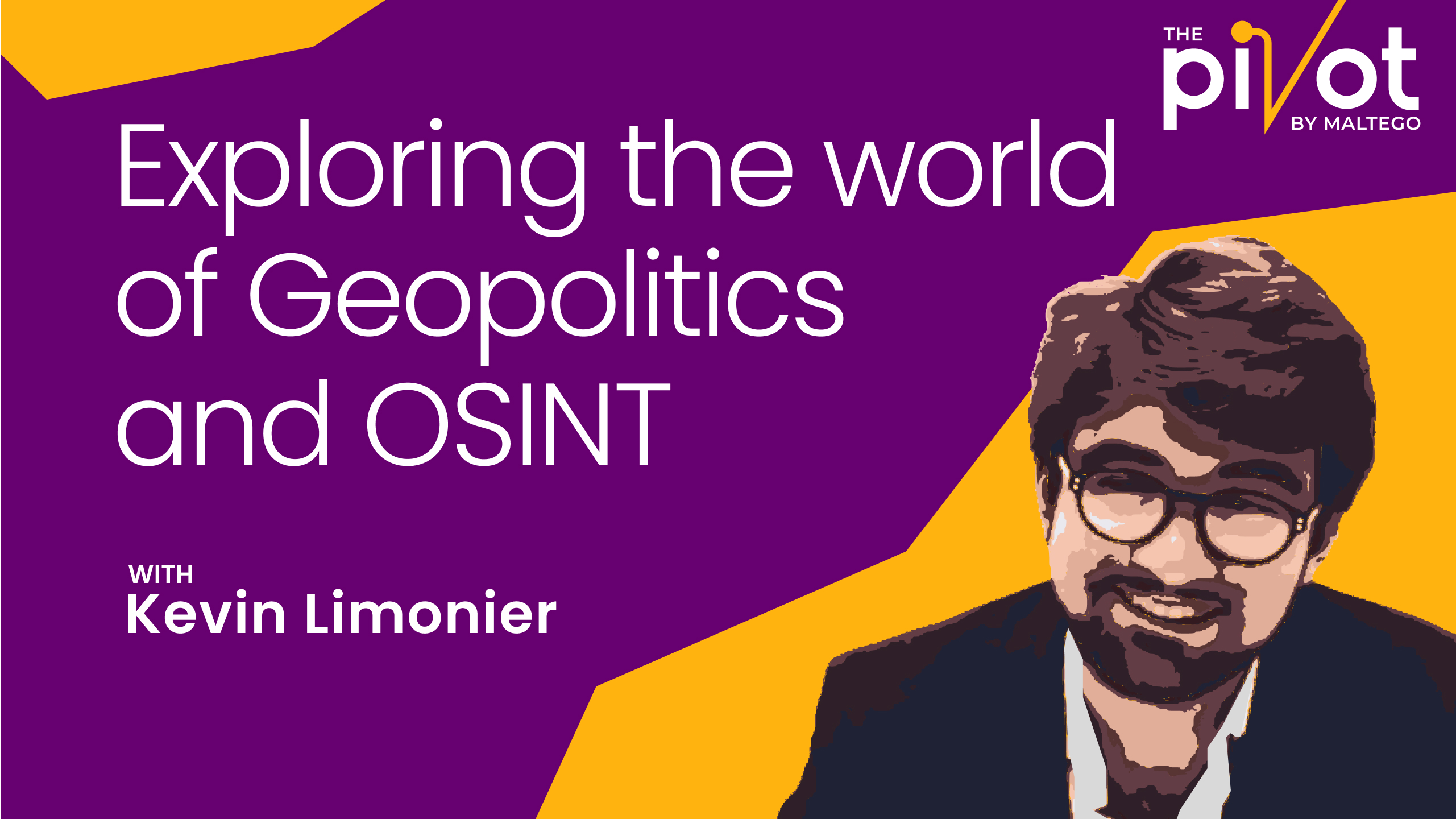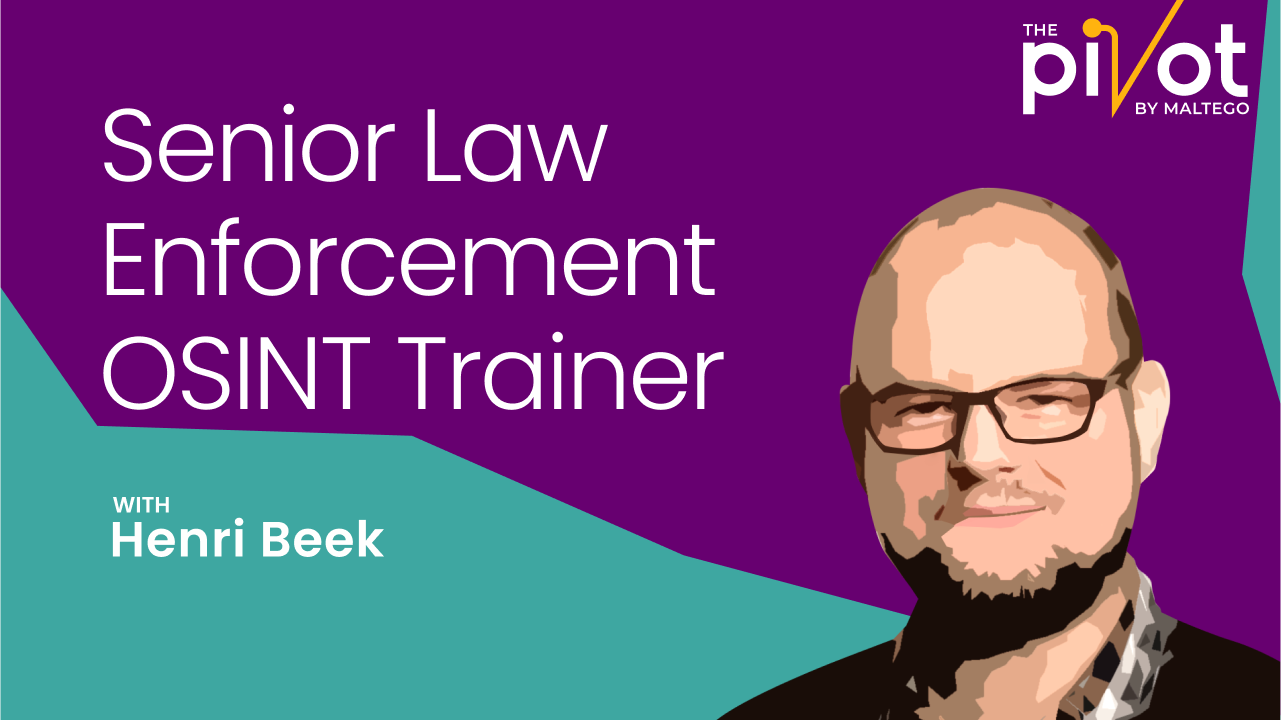In this episode for The Pivot podcast, we welcome our guest, Gisela Pérez de Acha!
Gisela is a human rights lawyer, an open source researcher at Berkeley Law’s Investigative Reporting Program and Human Rights Center, and a trainer at Amnesty International’s Digital Verification Corps, which is a global network of volunteers who fact-checks social media posts about war crimes and human rights violations. She reports on extremism and other topics for the Investigative Reporting Program with a focus on digital forensics and network analysis. She is also a cybersecurity expert and a digital safety trainer with PEN America.
In this episode of The Pivot, Gisela talks about the knowledge she gained from several OSINT investigations, which later led to her multi-career journey in journalism, investigative reporting, OSINT investigations, and more!
Listen to this podcast episode on Spotify, Apple Podcast, Google Podcast, or the Maltego YouTube channel!
The Pivot: Your New OSINT and Infosec Podcast 🔗︎
Brought to you by Maltego, The Pivot is your OSINT and infosec podcast that dives deep into topics pivoting from information security to the criminal underground. Through The Pivot episodes, we aim to share insightful information for beginners and seasoned investigators alike, shedding light on all things OSINT and infosec from an insider’s perspective.
Each episode features one or two of Maltego’s own Subject Matter Experts as the host and an external expert, researcher, or industry leader invited to share their projects, stories, experiences, and advice.
Where to Listen to The Pivot? 🔗︎
The Pivot podcast is available on Spotify, Apple Podcast, Google Podcast, and the Maltego YouTube channel. Each episode is 45 to 60 minutes long and is released on the 15th of every month. Stay tuned with us for more updates!
Tell us a bit about yourself and what got you into this field? 🔗︎
Gisela: So my name is Gisela. I am 33 years old. I currently teach at UC Berkeley’s Graduate School of Journalism. I teach open source investigations and I work as an investigative reporter as well. I am currently a cybersecurity lawyer focusing on data privacy within law.
One of the things a lot of people ask me is – How did you get here? In essence, how a 33-year-old Mexican woman gets to change careers from law to journalism and investigative reporting, and then teach and manage large teams of students for investigative reporting.
One of the moments that really changed me was reading Donna Haraway’s book. For those who don’t know her, she is someone who wrote about cyborg Manifesto in the eighties. That book changed my life and my way of seeing the world, seeing myself, and seeing the internet. I truly believe that all of us are cyborgs. We are all data in the end, all our thoughts, our wants, our needs, our fears, our cravings, and our work.
How did you get into intelligence and open-source investigations? 🔗︎
Gisela: What made me get into open source investigations, in general, was the 2017 earthquake in Mexico City. It was September 19th, 2017. I will never forget that day. I was in my office on a Skype call.
At the time, it was like if all of a sudden the laws of gravity suspended and everything was shaking around me in a really scary way. I remember rushing outside because that’s what you do in Mexico. I have since learned that in other parts of the world, you don’t run outside. But Mexico City is actually built on top of a lake so the foundations are not very solid.
It was right after the 2016 elections. That was one of the first sort of natural catastrophes that came with a lot of misinformation. I remember my grandma sending me photos that were completely fake – of bridges collapsing or bridges that were broken –, and WhatsApp became such a vital tool for communicating because lines were down and electricity was down.
Me and a couple of friends got together and we actually started this crowdsourcing effort with over 500 volunteers to fact-check information. We did it so well that we became the primary source of acts in the middle of the emergency.
I realized the power of harnessing social media for fact-checking purposes and fact-gathering purposes. This then led to me quitting my career as a lawyer and then I applied to the graduate school of journalism at UC Berkeley and met the Human Rights Center.
I currently work with them and they have this amazing space – the Human Rights Center Investigations Lab with over a hundred students that speak 30 different languages. Mostly women, mostly people of color, which is incredible in the open space. In that moment I just knew that I had found my tribe and I knew that I had found my jam.
You’re doing training, journalism, research, OSINT investigations. What keeps you going? 🔗︎
Gisela: Firstly, I love what I do. I remember being very bored when I was a lawyer and the feeling of boredom slowly eats you alive.
Digital risk was something inherent in growing up in Mexico and that was something that I was always very interested in. I especially focus on topics surrounding women and young women and understanding technology better and leveraging technology better in a respectful and egalitarian way.
There are ways to be resilient and there are ways in which you can tackle these things and not burn out and be mindful about what you’re doing. But first, it is the love of the job.
Second is the mission of journalism, which is essentially tied to democracy. The third is I adore the people that I work with. I adore them all at the Human Rights Center and the Investigative Reporting Program. They are all incredible human beings and I learn something new every day.
Has there been anything crazy that you’ve gotten yourself into as a journalist? 🔗︎
Gisela: Definitely interviewing someone who’s accused of murdering two policemen because of an extremist ideology, and being manipulated by him.
For instance, in the interview, he was so flirty and he was so charming, and that was one of the craziest experiences I’ve ever had. In your head, there is this constant voice that is like, “Why is this man so nice if he’s accused to these horrible things?” But that’s when the journalistic practice comes in and you step back to seeit’s actually the context that matters.
Have you ever received backlash or threats due to your work? 🔗︎
Gisela: Yes definitely. Over the span of my career I have gotten rape and death threats because I’m a woman of color doing this work and especially, reporting in predominantly white supremacist spaces or denouncing Machismo in Mexico.
Online harassment is always a social sanction for breaking gender norms because what are we as women? What am I supposed to talk about on the internet? What am I allowed to talk about? Cooking, decoration, babies, fashion. As soon as you step out of those gender roles and discuss topics that have been predominantly discussed by men before, the backlash is simply an expected response.
But the really cool thing, and what I love about the work that I do with PEN America is that you learn strategies. There are like small little hacks that you can do. For example, I just tweet music when I’m getting horribly harassed or I start responding to my trolls with fluffy animals or puppies or cute GIFs or kittens.
I think the point is not retaliating with abuse because that will only get you further into the hole, but changing the tone and reaching out to the people that you love and to, my tribe, my community of investigative reporters or my community of feminist activists in Mexico or my Twitter followers.
Apart from just retaliating with fluffy animal pictures, how do you keep up your mental health while dealing with threats and trolls? 🔗︎
Gisela: First of all, therapy. Therapy is extremely crucial for anyone in this field of investigative reporting. Especially if you are a man listening. Go to therapy. I always tell my students: We’re not going to make it in this field unless we go to therapy. By therapy, I mean a space – a weekly space where I can just talk about how I feel and impact my emotions. I think that is essential for survival.
Even though I am a cyborg, I really try to connect with my body as much as possible, so eating well, drinking a lot of water, yoga, meditation. I work out every day. Every day I’m moving my body and taking – even if it’s just 30 minutes – conscious embodiment outside of the cyber space to just feel myself and be with myself and see how I feel.
Another little hack that I love for my mental health is that I sleep with my phone in the bathroom. The worst is to wake up and scroll first thing in the morning because it gets your nervous system into a place of urgency. I have an analog alarm clock and I wake up with that. I make coffee or tea, and then sit with myself, think about my dreams, my emotions, and then I turn my phone on.
What are your top 3 tools for investigations? 🔗︎
Gisela: I could have not been able to publish or fact check any of the story if it weren’t for Hunchly. Especially in the extremists space, a lot of these posts and webpages get taken down by extremists themselves or by social media companies. So we cannot live without Hunchly.
Then I use a lot of InVID. This is sort of like a reverse image search tool that lets you cut a video into screenshots for reverse image searching.
Thirdly, since we work across all types of languages – not only on extremism, but also on disinformation or the immigration story that we’re working on right now – the Google Translate browser plug-in is amazing because you just click one button and the Russian web page is all of a sudden in English. So, I think those would be my top three.
The director of the Human Rights Investigations Lab has this saying: Let the tools follow the story and not the story following the tools. Let the investigation lead you to the hat you’re going to wear.
It’s something we see happening quite often. A lot of investigators would throw their whole toolkit at a problem, hoping the solution would rise to the top. 🔗︎
Gisela: No, actually, I really couldn’t agree more with you because this is something that we see happening quite often. A lot of investigators will throw their whole toolkit at a problem, hoping to have a solution that kind of rises to the top.
But it doesn’t. Being specific about what you are, what you’re aiming for, a specific kind of result that you’re aiming for is probably more time-saving and less stressful than throwing the whole kitchen sink at a problem and expecting some sort of solution to suddenly show up out of the blue.
That’s where I really appreciate my editor, David Barstow. Recently, we were looking at all these flight tracking data. My colleague, Stephanie, and I were merging databases and throwing all our kitchens to get it. And the David was like, “Have you actually looked at the data with your own eyes?”
And I was like, “What do you mean?” He was like, “Yeah. Have you looked at the data to see if you can pick up patterns with your eyes?”
So I looked at the data with my eyes and it was so obvious. That was just a really good reminder – Use your brain. Just use your eyes and that’s usually the low-tech solution that ends up being the most efficient one.
What are some things you always tell someone in this field of work? 🔗︎
Gisela: Firstly, I always tell my students to read and devour anything you can about the topic that you’re investigating. A lot of the creative investigative processes come from simply borrowing all the books that you can on the topic. So I would definitely say reading is one of the three key things.
Second would be to do anything that makes you feel connected with your body whether that’s cooking or stretching or anything that is simply off-screen. It is especially important to relax and take care of yourself in this field of work.
Thirdly, build a community and be less isolated. It can be a very isolating job, even though there are strong online communities. We can’t burn out and we can’t quit. So in the end, that’s what will make you last longer and do your work better. And it’s where I get all my inspiration from. It’s a great mindset to have.
There’s More! Listen to Our Full Interview with Gisela! 🔗︎
If you find the snippets of the interview interesting, don’t miss the full interview!
Listen to our full interview with Gisela to learn more about:
- How Gisela got into the world of OSINT and investigative reporting
- Her experiences that she has gathered throughout the course of her career
- How she works towards maintaining a balance between her work and her mental peace
And much more!
Listen to this podcast episode on Spotify, Apple Podcast, and Google Podcast and follow our podcast for future episodes!
Check out Gisela’s work on her Twitter!
Don’t forget to follow us on Twitter, LinkedIn, and YouTube, and subscribe to our email newsletter, so that you never miss an update, tutorial, or interview like this.
Happy investigating!


 4.5 rating
4.5 rating


